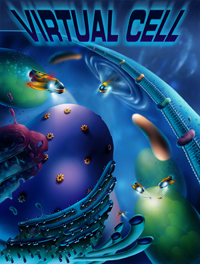
LGPL Sources Used by the Virtual Cell client
The Virtual Cell Project is currently making use of a modified version
of the open source Xj3D Project's Xj3D Browser library. The majority of
the local modifications are to enable the Xj3D browser to operate in a
WebStart environment without requiring the installation of the browser
and its required libraries on the client machine.
That code is licensed under the Gnu LGPL, and in accordance with that
license
this project is making our modifications available to other users of the
Xj3D Browser.
The entire purpose of this page is to fulfill the requirement of making
available modifications that the Virtual Cell project has made to the Xj3D
browser that haven't been incorporated into the main source repository
at http://Xj3D.org. The source here hasn't
been organized into a formal release because the local development team
is actively working with the Xj3D development team and is helping to implement
the EAI and external SAI interfaces. If you're a developer trying to use
the Xj3D browser to do what we're doing with it, send an email to Brad Vender
at
bradley.vender@ndsu.nodak.edu with an obvious subject line like
"vcell.ndsu.nodak.edu/source question" and the questions will be answsered.
Xj3D Sept 22 2003 Version
Downloading
The September 22, 2003 version of the Xj3D library used by the Virtual Cell
client can be found at http://vcell.ndsu.nodak.edu/source/xj3d-source-Sept-22-2003.jar, a compressed JAR file containing the source and resources for the
project.
Utilizing and Building Xj3D
xj3d-source-Sept-22-2003 is the result of exporting the project from Eclipse.
The org and vrml folders contain the actual working java files in the
org.whatever and vrml.whatever packages. Java files
from the parsetest/eai and parsetest/sai directories are in the high level
directory of the archive. The src directory contains various source files
that were excluded from Eclipse's build path. The lib directory contains
the eight or so jar files necessary to build and run the browser not counting
the Java3D 1.3 libraries.
If these instructions don't make sense, send helpful comments and questions
to Mr. Vender at the above email address.
